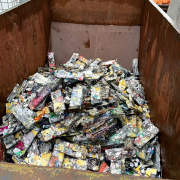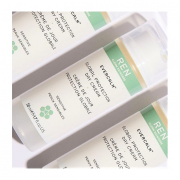Indian Scrap Cars: “Rust in Peace”
End-of-Live Vehicle recycling in India is ripe for improvement.
According to figures of the Society of Indian Automobile Manufacturers, the domestic sales increased between 2012/13 and 2017/18 from 17.7 to 24.9 million vehicles. However, the rising number of end-of-life vehicles does not correspondent to a quantitative or qualitative increase of scrap car treatment. Dr. Lakshmi Raghupathy, former Director at the Ministry of Environment, Forest & Climate Change of India and now consultant for environment & waste management, described the recycling situation in her country on the 21st of March at the IARC in Vienna.
As the Indian speaker underscored, the shape of Indian scrap yards lack regulation and proper infrastructure and can be summarized by “Rust in peace”. The informal sector provides the major service by searching, collecting and salvaging reusable replacement parts. Small units are operating in the heart of the cities, offering potential employment for the urban underclass. The primitive manual treatment leads to air pollution, contamination of water and release of heavy metals into the soil. So better practices, access to more environmentally sound technologies, increased training of operations and efficient capacity building is urgently needed.
Policy framework still necessary
Several rules were notified to regulate amongst others the end-of-life vehicles sector: by setting directives to ozone-depleting substances, batteries, hazardous wastes, solid waste management, e-waste management, and plastic waste management. The automotive industry developed standards in-line with European Directives of 2000 and 2005, the Indian Automotive Research Association (ARAI) together with the Society for Indian Automobile Association (SIAM) and the Ministry of Road Transportation and Highways developed the ‘Automotive Industry Standards for End-of-Life Vehicles’ in 2015, and the government prepared a concept note on a voluntary vehicular fleet modernization policy in 2016.
A national policy framework is still necessary to control generation, collection, treatment, recycling and disposal of end-of-life scrap, said Lakshmi Raghupathy. The policy instruments to be developed include regulatory tools, financial instruments as well as incentives for assessment and capacity building. Guidelines are needed for the identification of end-of-life vehicles and for the prescription of environmentally sound management procedures. This would regulate the collection channels, clear the necessary automobile recycling stages and integrate the informal and unorganized sector – responsible for the collection, decontamination, dismantling and salvaging – into the formal and organized sector – commissioned for processing and resource recovery.
Potential for the Indian steel industry
According to the information, meanwhile, the Global Automotive Research Center (GARC) in Chennai, India, is housing the facilities for comprehensive testing services, provides certification testing and research as well as development support to the national automotive vehicle and component manufacturers. And CERO is India’s maiden organized auto shredding venture and vehicle recycling unit treating specialized steels and other non-ferrous metals from automobiles. In its own words, this project aims to reduce environmental footprint through eco-friendly practices of recycling scrap vehicles, symbolizing an effort towards creating a zero waste and zero pollution eco-system.
End-of-life cars on average scale up to 1,600 kg and contain 65 to 70 percent steel, 15 to 20 percent rubber and plastic, seven to eight percent aluminum and one to 1,5 percent copper. As Lakshmi Raghupathy outlined, this could be a potential for the Indian steel industry: The country could scrap seven million vehicles or 25 percent of total cars, generate six to seven million tons of additional steel scrap in initial years and create a branch of around 2.9 billion US-Dollar, likely to increase in the future. The Indian government is quoted to estimate a fourfold growth of turnover for the automobile sector in the coming years. But recycling still takes place mostly in the informal sector, and political regulations or guidelines on End-of-Life vehicle treatment are absent. So, the circular economy could be “a road to future”.
Photo: O. Kürth
(GR 22019, Page 10)








